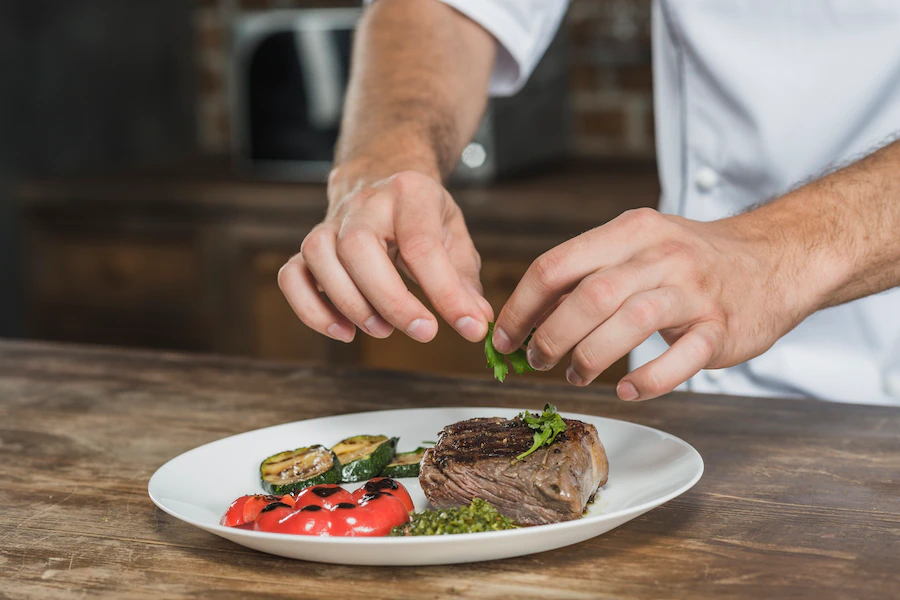
Cooking Techniques And Tips For Perfect Australian Lamb Dishes
When it comes to culinary excellence, few types of meat capture the essence of flavour and versatility quite like Australian lamb. From succulent chops to hearty roasts, lamb offers a canvas for creating dishes that delight the palate. To embark on the journey of mastering the art of cooking with this delectable meat, here are some essential techniques and tips to ensure your Australian lamb creations are nothing short of perfection.
Selecting The Right Cut

The first step in crafting a remarkable lamb dish is selecting the right cut for your intended preparation. Different cuts offer varying textures and flavours, catering to diverse cooking methods. For instance, tender cuts like lamb loin or rack of lamb are best suited for quick cooking methods like grilling or pan-searing, while tougher cuts such as lamb shanks shine in slow-cooked dishes.
Marination
Marination is your key to infusing depth and complexity of flavours into Australian lamb. The right marinade can transform a simple dish into a culinary masterpiece. Combine elements like acid (citrus, vinegar), oil, herbs, and spices to create a marinade that complements the natural taste of lamb.
The Art Of Seasoning
Seasoning is the foundation of flavour. Before cooking, generously season your lamb with salt and pepper. This enhances the meat’s taste and forms a flavorful crust when seared, creating a delightful textural contrast.
Perfecting The Sear
Searing is a technique that locks in moisture and imparts a rich colour and flavour to your lamb. Ensure your pan or grill is sufficiently hot before adding the meat. Place the lamb carefully and let it develop a caramelised crust before flipping. This step adds both visual appeal and depth to your dish.
Slow-Cooking
For tender, fall-off-the-bone results, embrace slow-cooking methods. Slow cooking allows the flavours to meld and the meat to reach optimum tenderness, whether in a slow cooker, oven or stovetop. This technique is ideal for cuts like lamb shoulder or leg.
Read Also: Lactose Intolerance-Friendly Delights: Dairy-Free Alternatives For Food Lovers
Savouring The Flavors
After cooking, resist the temptation to slice into your lamb creation immediately. Allowing the meat to rest for a few minutes after cooking allows the juices to redistribute, ensuring each bite is succulent and flavorful.
Internal Temperature Matters
To achieve the perfect doneness, it’s crucial to monitor the internal temperature of your lamb using a meat thermometer. Different cuts have varying ideal internal temperatures, so refer to a temperature guide to ensure your lamb is cooked to your preference.
Pairing With Perfection

Pairing your delicious Australian lamb recipes with the right accompaniments can elevate the dining experience. Consider the flavours and textures of your dish when selecting side dishes, sauces, and wines. Complementary pairings enhance the overall enjoyment of your meal.
Sauces
Sauces are the crowning glory of many lamb dishes. Whether it’s a classic mint sauce, a rich red wine reduction, or a tangy yoghurt-based sauce, the right sauce can enhance the flavours and bring your dish to new heights.
Embracing Culinary Creativity
While mastering lamb cooking techniques is essential, don’t be afraid to infuse your unique culinary flair. Experiment with herbs, spices, and flavour combinations that resonate with your palate. Australian lamb’s versatility invites you to explore new horizons and create dishes that are yours.
Conclusion
Mastering the art of cooking with Australian lamb is a journey of discovery and delight. By selecting the right cuts, mastering techniques like marination and searing, and paying attention to details like seasoning and internal temperatures, you’re well on your way to creating perfect lamb dishes. As you experiment and refine your skills, remember that the joy lies not only in the result but also in the process of exploration and innovation. So, roll up your sleeves, embrace the culinary adventure, and unlock the full potential of lamb in your kitchen.
Read Also:



















Post Your Comment